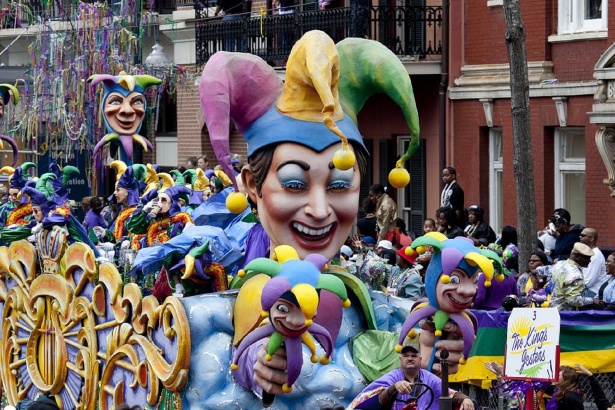New Orleans and Siena are, in many ways, spiritual sister cities. The Palio and Carnival are both important civic rituals that bring their communities together in celebration. Just as the foundation of Mardi Gras is religious, celebrated on the day before Ash Wednesday, the same is true for the Palio, as each race is run on a feast day honoring the Virgin Mary. Just as Siena is a city of neighborhoods, so too is New Orleans. Serendipitously, Siena is divided into 17 contrade, just as New Orleans is partitioned into 17 wards. The floats of Rex’s 2023 Parade artistically represent each of Siena’s 17 contrade, ten of which compete in each Palio di Siena.
Much as Carnival helps define New Orleans, the centuries-old traditions of the Palio help define the ancient Tuscan city of Siena, Italy. The Corsa del Palio, the Race of the Banner, is an ancient Italian horse racing tradition tracing its roots to the Republic of Siena’s “golden age” in the 13th century.

Annually, two horse races – one in July and one in August – occur in the Piazza del Campo, the city’s main square, which is transformed into a dirt-packed track covering a third of a mile. The race, which consists of three turns around the tight-cornered track, is thought to have begun as a Roman military training exercise. The word palio is derived from the Latin pallium, which means a robe or banner. The winner of each Palio is awarded a unique, artistically designed banner depicting the Virgin Mary, in whose honor each race is run.
Rex’s 2023 Parade theme also honors Italy’s strong and deep influence on New Orleans’ culture, history, food, and music. From the late nineteenth century through the early twentieth century, the United States economy industrialized and grew rapidly. During that time, due to conditions in Italy and opportunities in America, an estimated three hundred thousand Italian immigrants came through the Port of New Orleans to fulfill jobs that helped fuel that economic growth. A significant portion came from Sicily, and so many made their homes and businesses in the French Quarter that the neighborhood came to be known as “Little Palermo” after the Sicilian capital. To this day, St. Joseph’s Day is celebrated in New Orleans each March 19th, evidence of the enduring influence of New Orleans’ Italian American community, and the Piazza D’Italia on Poydras Street honors the lasting connection between Italy and New Orleans.












